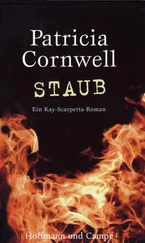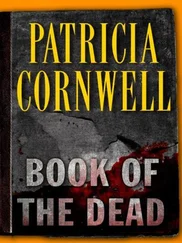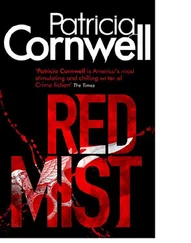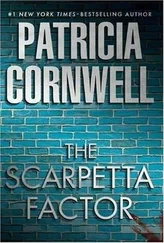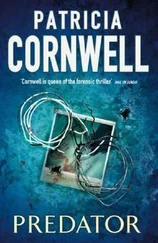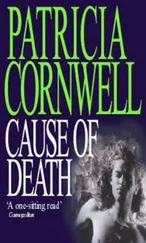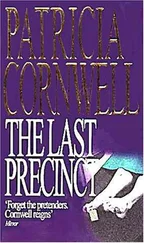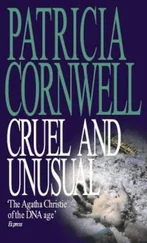“It’s obviously not Lucy’s new bird.”
“Haven’t seen it yet,” he says. “She’s too busy going after pig farmers to give me a ride.”
“We won’t remove her jewelry now, but let’s get photos, lots of photos. She’s not going to look like this when we get back.”
“Have got a shitload already, but I’ll get more.”
“More is better.”
“Why would it be Lucy’s?” Using the ruler as a scale, he places it next to the wrist wearing the watch. “She sure as hell wouldn’t be moonlighting for some TV station or film crew, or posting videos of you all over the Internet.”
“Of course not.”
“You should give her the tail number and ask her to run it,” he says. “I guarantee she’ll figure out who it is and why they were spying on us.”
“We don’t know that whoever was in that white helicopter was spying. Maybe they were just curious. There also was a sailboat nearby,” I recall. “A tall ship with red sails that were furled. It was sitting out there maybe a hundred yards from us when we were getting her and the gear out of the water, and it never moved. I’ll e-mail the tail number to Lucy.”
I dip swabs into distilled water.
“If we can find out where this lady died, we might find pieces of her fingernails,” I decide. “No defensive injuries I can see so far, but she was doing something that broke all of her nails. Toenails, fingernails, every one of them.”
I rub the cotton tips under each fingernail, and the swabs turn a reddish tint.
“The same reddish staining that’s on her feet?” I wonder. “Whatever it is, I can’t get all of it. It’s way up in the quick.”
I hold the red-tinted swabs under the surgical lamp and examine them with the magnifying lens.
“Something fibrous, maybe,” I observe. “It reminds me of fiberglass insulation but more granular, like dust or dirt, and a darker color.”
I cut her nails with a pair of small scissors, and pink-painted slivers make quiet clicking sounds as they drop into the bottom of a paper envelope I hold open.
“I’ll take a look under the scope, then see what Ernie has to say,” I add, and I’m mindful of seconds slipping away, of time running out for the dead woman and me.
I might get in trouble, it could happen, and I label nail clippings and swabs for trace and DNA, and arrange syringes with different-gauge needles on a surgical cart as the minute hand on the wall clock ticks closer to two p.m. My pulse picks up, but I can’t stop, and inside a glass cabinet I collect ETDA blood tubes and FTA cards, although I know without a doubt that getting blood from her is going to be a challenge. It will have seeped out of vessel walls long ago, and I’ll be lucky if I get enough to blot a card.
“You scribe and keep taking pictures, and we’ll go at this really fast.” I check the flexibility of the neck, the arms, and try to separate the legs, but they’re stubborn. “Rigor’s indeterminate,” I dictate to Marino, and he writes it down as I remove the thermometer from the incision in her abdomen. “Temperature of her liver is forty-two degrees, and that’s interesting. Are we sure about the water temperature of the bay? Pamela Quick said it was fifty-one degrees.”
“The temp on the Coast Guard boat’s GPS was fifty-one degrees,” Marino confirms. “Of course, it would have been a little colder as the water got deeper.”
“Nine degrees colder at the depth where she was held in place by the ropes?” I doubt it. “And she didn’t get colder in water that is warmer than she was. What that means is she was colder than forty-two degrees when she first went in.”
“Maybe she was kept in a freezer somewhere.”
“There’s no damage to her from fish and other sea creatures, which she likely was going to get if she was submerged for even a day or two. I seriously doubt she was in the water long enough to thaw,” I decide. “Either she’d already begun to thaw when she went in or she was kept really, really cold somewhere but not frozen solid.”
I begin to undress her, the clothing soaking wet, soiled, and gritty, and she smells more strongly of decomposition. The foul acrid stench crawls up my sinuses and coats my teeth, and soon it will be bad enough to make my eyes sting.
“Shit,” Marino complains, and he swaps out his surgical mask for one with a filter.
I work silk-lined dark blue cashmere over her shoulders, pulling stubborn arms out of long, clingy sleeves, holding up her jacket to look at it front and back. I see no holes, no tears, no damage. But the three brownish metal buttons in front don’t match and look very old.
“Possibly antique. Possibly military,” I say to Marino. “Let’s get close-ups. Like the ring with the old coin, these could be important because they’re unusual.”
I spread out the soaking-wet jacket on the sheet-covered table, noting the long curved back, the tapered waist, the tonal embroidery on the sides and sleeves.
“The label is Tulle Clothing, size six. Well, she’s not a six now. More like a zero,” I comment.
“How do you spell Tulle ?”
I tell him, and he jots it down on a clothing diagram. “It’s quite distinctive,” I add. “Sort of a Tallulah style.”
“Got no idea what that is.” He begins taking photographs of the buttons.
“Retro-cut, with structured shoulders and wide lapels, and ornate embroidery stitched in thread the same color as the fabric,” I explain. “Imagine Tallulah Bankhead.”
“Someone with money trying to be glamorous,” he says. “It doesn’t make sense if no one knows she’s missing.”
“Someone knows. The person who dumped her in the bay does.” I begin going over the buttons with a hand lens.
fifteen
TARNISHED BRASS WITH A HINT OF GILT, EACH BUTTON has some type of eagle design and an iron shank at the back that has been sewn onto the jacket’s front with heavy dark thread.
“Civil War. The genuine article. Around the same date as the coin in her ring.” Marino leans close, peering through his reading glasses. “Holy shit, these are something.”
I return to the stretcher, and the putrid smell gets stronger as I begin unbuttoning the blouse. Decomposition is darkly swarming in like a plague of invisible insects as we work and time slips away, moving her closer to putrefaction as I move closer to being held in contempt of court.
“Probably not from a regular foot soldier. Probably officers’ buttons.” Marino reaches for a hand lens, judgment creeping into his tone. “Most people who collect old buttons don’t sew them on clothes. No normal person would do that.”
“It does seem a bit out of the ordinary,” I remark. “Wearing antique or estate jewelry and so on is one thing, but sewing it on clothing would be another, I suppose.”
“You got that right, and button collectors don’t.”
His voice is flinty with disapproval, as if he’s made a sudden decision about the dead woman’s character.
“They display them, put them in picture frames, swap them, sell them, maybe donate them to museums, depending on what they are,” Marino says. “I’ve seen buttons like these go for hundreds, even thousands, of dollars.”
He studies the three buttons closely with the lens, nudging each one with a gloved finger.
“If you look at them from the side”—he shows me—“they’re not dented in at all, are in really great shape, which adds to the value. You’d never sew something like this on a jacket. Who the hell does that?”
“Well, she did, or someone did,” I reply.
Removing her wet blouse, I decide it’s purple, not burgundy. The tag at the back of the collar is Audrey Marybeth, size six.
“Maybe she was involved in antiques,” I add. “Maybe she collected or was a dealer, or the buttons belonged to someone in her family.”
Читать дальше

